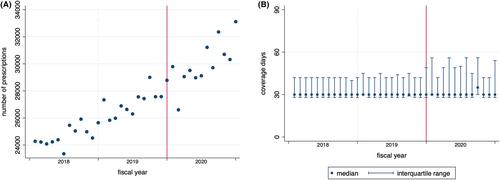Treatment interruption in hypertensive patients during the COVID-19 pandemic: An interrupted time series analysis using prescription data in Okayama, Japan
Abstract
Background
The COVID-19 pandemic has impacted healthcare behaviors, leading to fewer pediatric visits in Japan and potentially fewer visits by adult patients. However, existing Japanese studies on treatment interruptions have generally relied on questionnaire-based methods. In this study, we assessed the impact of the pandemic on antihypertensive treatment interruption using real-world prescription data.
Methods
We conducted an interrupted time series analysis using the National Health Insurance Database in Okayama Prefecture, Japan. Participants included individuals aged 40–69 years with at least one antihypertensive prescription between 2018 and 2020. Treatment interruption was defined as a 3-month or longer gap in prescriptions after medication depletion. We used segmented Poisson regression with models unadjusted and adjusted for seasonality and over-dispersion to assess monthly treatment interruptions before and after Japan's April 2020 emergency.
Results
During the study period, 23.0% of 55,431 participants experienced treatment interruptions. Cyclical fluctuations in interruptions were observed. The crude analysis indicated a 1.2-fold increase in treatment interruptions following the pandemic; however, the adjusted models showed no significant changes. Even among higher-risk groups, such as women, younger adults, and those with shorter prescriptions, no significant alterations were observed.
Conclusion
We found no significant impact of the COVID-19 pandemic on antihypertensive treatment interruption in Okayama Prefecture. The less severe outbreak in the area or increased use of telemedicine and extended prescriptions may have contributed to treatment continuity. Further research is needed using a more stable and comprehensive database, broader regional data, and detailed prescription records to validate and extend our findings.


 求助内容:
求助内容: 应助结果提醒方式:
应助结果提醒方式:


